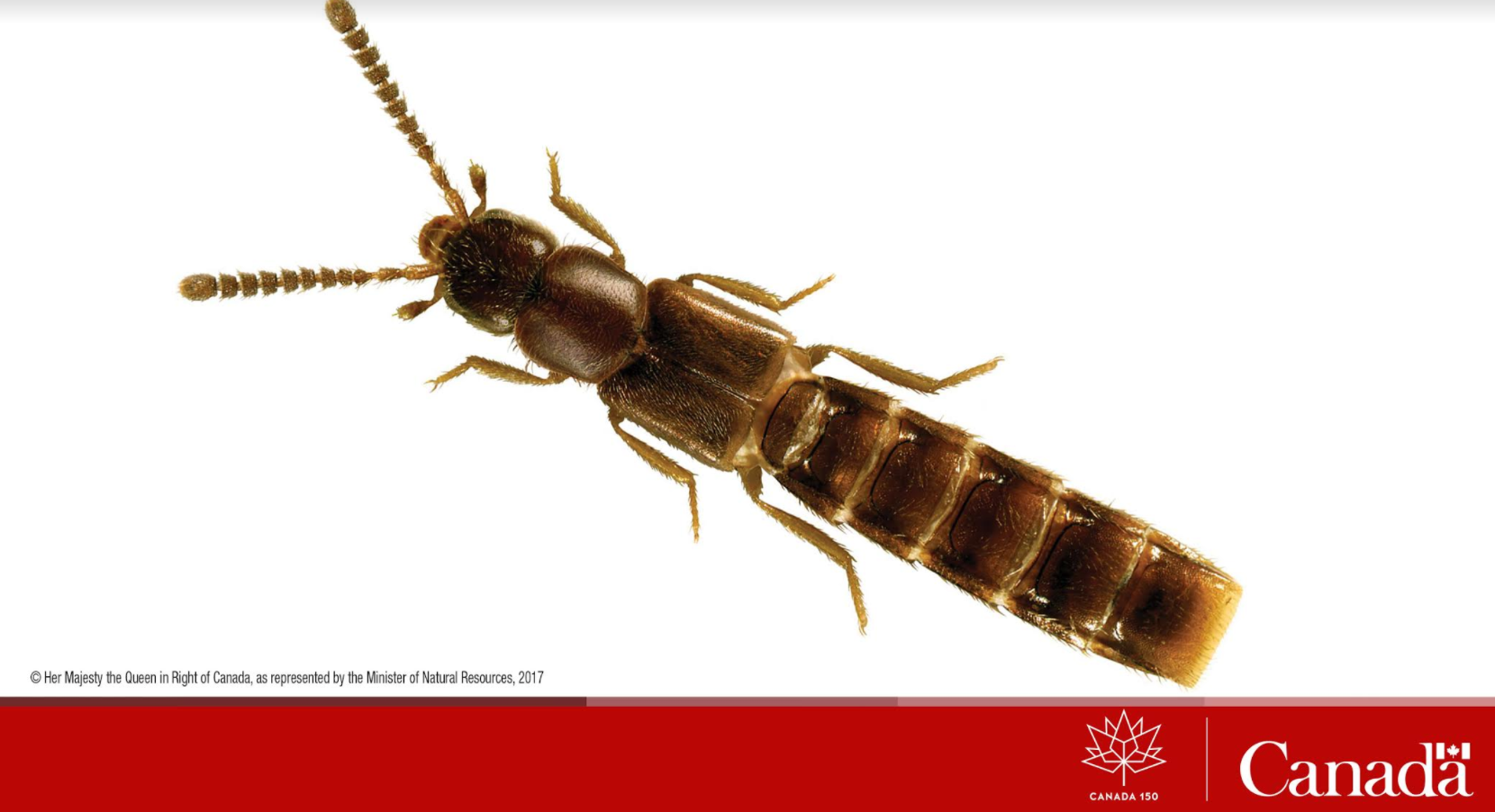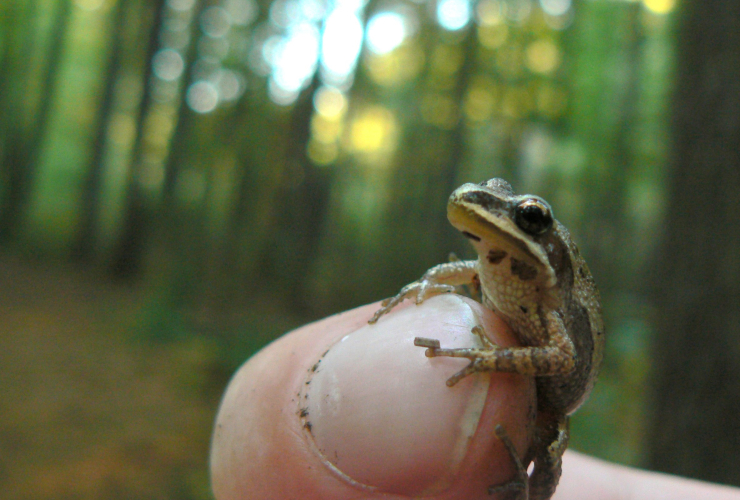It may not be the cute and cuddly birthday gift most Canadians were hoping for, but scientists say that good things come in small packages.
They're referring to a newly-discovered species of beetle burrowing about New Brunswick — named Apimela canadensis in honour of Canada's 150th anniversary.
The tiny beetle belongs to an insect family of roughly 1,700 species, whose role is to work with fungi and other microorganisms to break down the wood that provides nutrients to trees, said Jan Klimaszewski, a federal scientist who works for Natural Resources Canada.
Four specimens were discovered for the first time in 2010 near a brook in the Jacquet River Gorge Protected Area in northern New Brunswick. A fifth was found in the Meduxnekeag Valley Nature Preserve west of Woodstock, N.B.
"They are very important (insects) in terms of ecology as a dominant group in forest litter," Klimaszewski told National Observer. "The genus that the species belongs to was never recorded before in Canada, but has been recorded in the United States. So it's a new record of a genus and a description of a species new to science."
Apimela canadensis — or A. canadensis, for short — was discovered by Reginald Webster, a research scientist based in Fredericton. But its new name was published in a scientific journal on May 3, by Klimaszewski and Webster.
It took six years to be able to provide a thorough description of the insect, Klimaszewski explained, including body type, habitat and taxonomic identification. Even now, he added, little is known about its function in the ecosystem — all items to be discovered through dissection and further research.

Carrying the name of Canada
At two to four millimetres in length however, with a slim and linear body, it's clear that A. canadensis is well-adapted to its life in between grains of sand, said Klimaszewski. The species will be included in upcoming book by Natural Resources Canada's Canadian Forest Service, describing the entire Aleocharinae subfamily, of which it is a member.
It may not be pretty look at, the research scientist added, but it's a critter worthy of recognition on Canada's 150th anniversary.
"This little beetle carries the name of Canada and will carry the name of Canada until the end of civilization," he said. "I would say that people don’t appreciate very much what we don’t see, but we have here a gold mine of new species in Canada.
"It’s like discovering the cosmos. People see stars and they name them and they want more."
There are roughly 80,000 known species of insect living in Canada, including about 8,000 beetles. While discovery of new insects is relatively common in tropical countries, Museum of Nature entomologist Robert Anderson said the discovery of new bugs in Canada is relatively uncommon.
He agreed with Klimaszewski — insects tend to be out of sight, out of mind, and underrated by the general public. And there's no better time that Canada's 150th birthday, he said, to recognize their contributions to the ecosystem.
"They're little things, but everything is important in the whole big cycle," Anderson said in an interview. "Most of the things that remain to be discovered are these little things, small in size, but who do things that are cryptic. Finding a new one of those — it's pretty exciting to the science community, to the nerd community.
"You won't see it on the next coin and you won't see it on CNN, but like I say, among the science community, these things are regarded as significant discoveries."






Comments